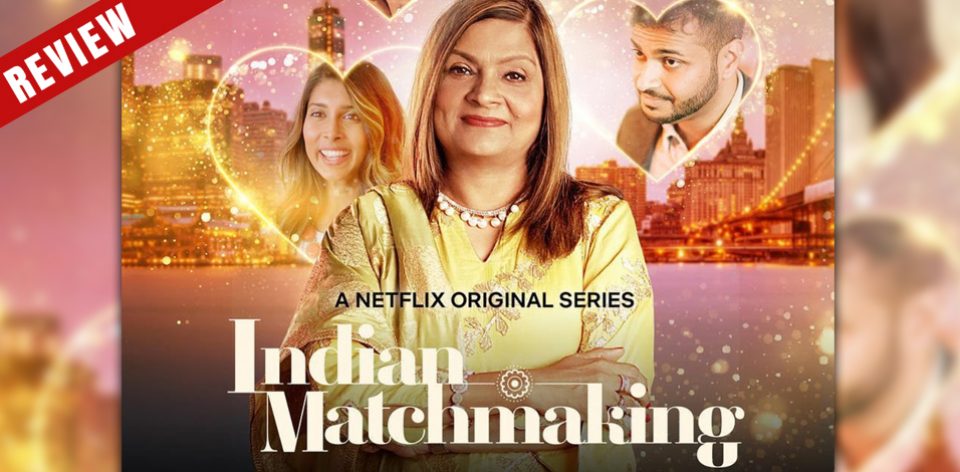What is the art of story-telling? It can be described as an experience of narrating an incident from the point of view of the storyteller. In retrospect, what makes the story interesting is when the audience resonates with the intent/point of view of the story-teller. After a long time, I have watched something and have no idea what the intent of the storyteller is or how I feel after watching it. I am talking about Indian Matchmaking produced by Smriti Mundhra, who got an Oscar nomination last year for ‘St. Louis Superman’.

Indian Matchmaking is a Netflix original Indian docu-reality web series with ‘Sima Taparia (from Mumbai)’ as the narrator that breaks down the stigma of arranged marriages and everything that goes behind the process of choosing ‘the one’. For people who don’t know, Sima Taparia is a marriage consultant in Mumbai who is well-known to almost all high-profile Marwaris (an Indian ethnic group that originates from the Rajasthan region of India). Throughout the 8 episodes, we are introduced to various people who are single and looking for a life partner. The common thread that ties these individuals together is their roots in India and the fact that each of them has entrusted Sima Taparia to help them find a partner. As the episodes unravel, we see (questionable) practices still deployed by various families to find the partner.

Right off the bat, I was cringing with every other aspect of the show. We got to see a matchmaker who blatantly tells a single mother that she will have fewer options to choose from because she has a kid or an astrologer discussing the potency/sex life of a potential client or a well-traveled guy in his mid-20s saying “my mom is literally what I want to be looking at in a wife” or a mother telling her kid “I don’t ever want to see a B in the report card. I don’t want two degrees, I want three”. We even had a stereotypical ‘South Mumbai’ cousin who starts speaking with an American accent only to fizzle out in five minutes to go back to her regular Indian accent.

I am not denying the authenticity of such characters or disagreeing with the opinions voiced in the show. Maybe this is the ugly truth that the Indian matchmakers deal with and Smriti wanted to be honest in her attempt to showcase the reality. But does the show cover all the stigmas or only those stereotypes which would create a sensation? Do we not have even a shred of progressive thinkers in India that the show could tap into? The only progressive aspect of the show was when it narrated the story of a financially independent woman who is looking for a partner but even that was besmirched when the matchmaker told her that it doesn’t matter how hard you worked, you will need to compromise and adjust.

As an individual who has grown up with three women in the house (my mom and two older sisters), I abhor the fact that we are still represented as a regressive society in the eyes of international media. I witnessed the marriage of my sisters and everything that came with it and I am proud to say that there is a different end of the spectrum of marriages that haven’t been narrated in this docu-reality show.
Surprisingly, this isn’t the first collaboration between Smriti Mundhra and Sima Taparia. They came together in 2019 to release ‘The Suitable Girl’ – an award-winning documentary addressing social issues surrounding arranged marriage. So, maybe this time, Smriti wanted to look at Indian arranged marriages through the lens of ‘satire’. As an audience, how she deconstructed ‘arranged marriages’ didn’t resonate with me.
As my colleague rightfully said… ‘Love it or hate it, you just can’t ignore it! It’s a guilty pleasure for many’
Reviewed by Puneet Ruparel






